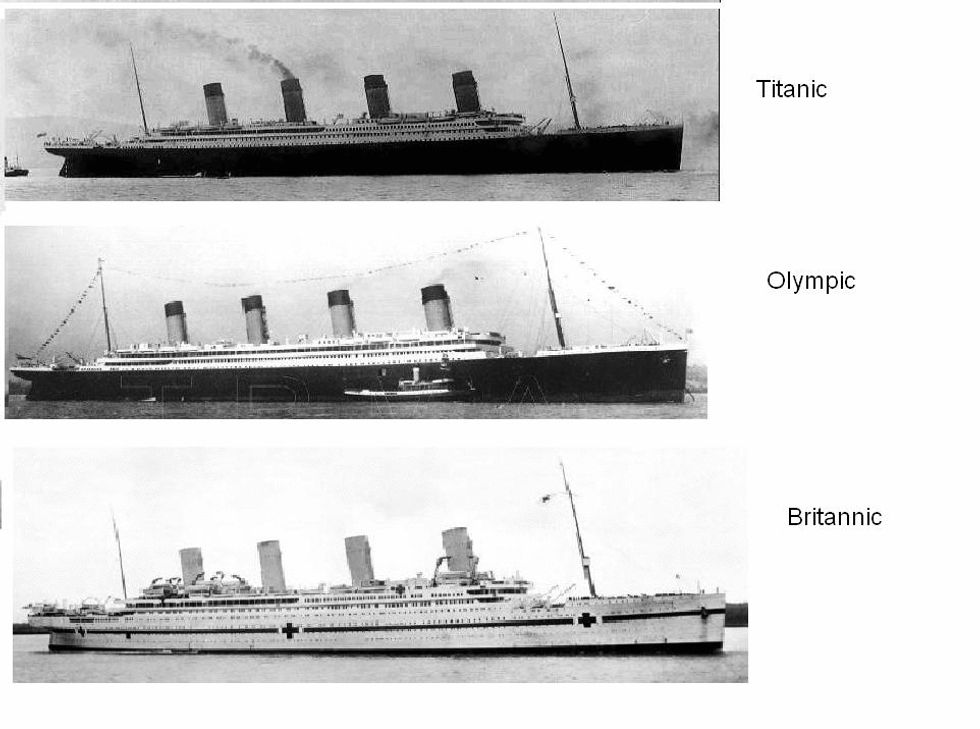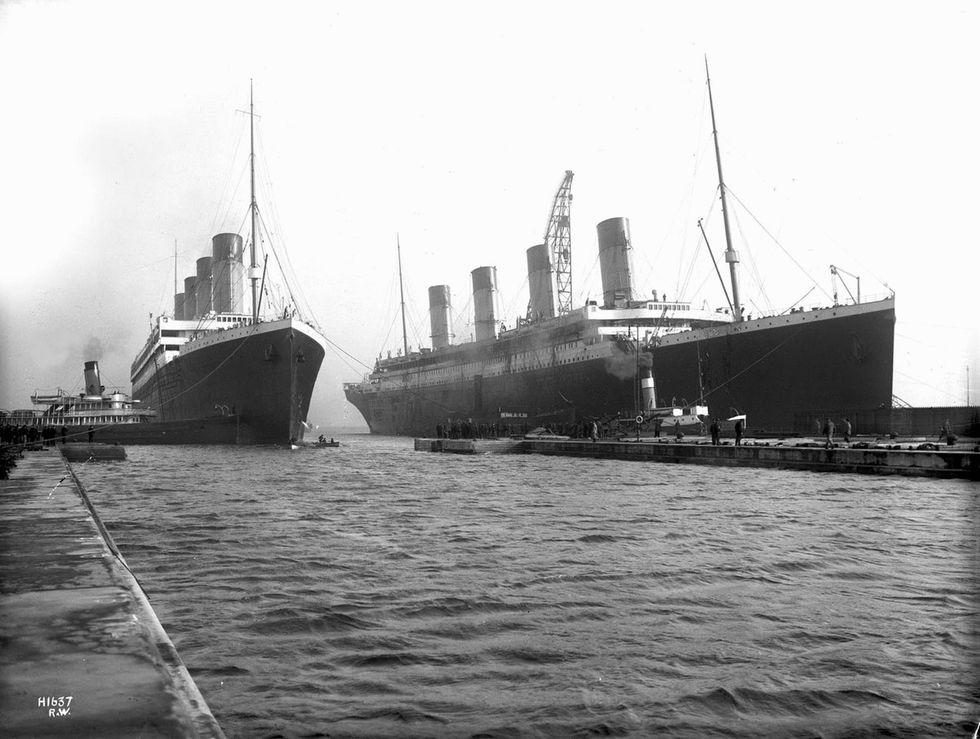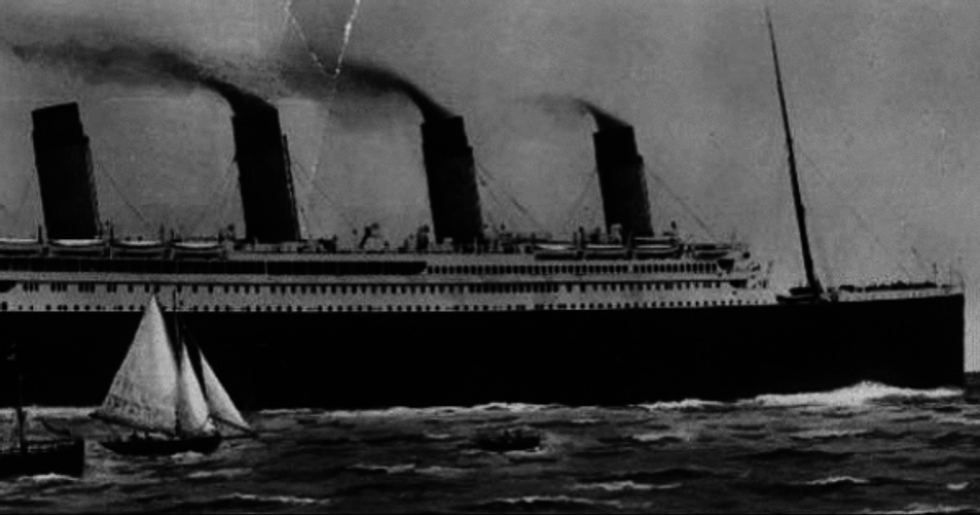This may sound crazy, but I promise there's a logic behind this theory. I can't be the only one who's wondered how the Titanic hit a giant iceberg on a night that was documented in history as clear with good visibility. Let's dive into the rabbit hole on this theory, shall we?
For starters, the RMS Titanic was built by a British company under the name of White Star Line. White Star Line was known for building "Olympic-class" liners, in which they built three: RMS Olympic, RMS Titanic, and the HMHS Britannic, though they also had a fleet of other, lesser-known ships. White Star Line wanted to be known to have the best, biggest, and most luxurious ships at the time, so they contracted Belfast shipbuilders Harland and Wolff. Harland and Wolff were directed to design the RMS Olympic and RMS Titanic under the condition that they did not worry about cost, only size and luxury.

Upon completion of the three ocean liners, the altogether cost was about 7.5 million USD, or roughly 199 million USD in 2016. Construction for the Olympic started in December of 1908 and its first voyage was in June of 1911; the Titanic first saw construction in March of 1909 and its maiden voyage was in April of 1912, and the Britannic wasn't commissioned for about another three years after the Titanic's first voyage. The Titanic and Olympic were actually, for the most part, constructed side-by-side. They were designed to look exactly alike for the purpose they were going to be used as shuttle services from Europe to the United States. To a regular person, it would be nearly impossible to tell the difference between the two.
Here's where it gets interesting. In September of 1911, the RMS Olympic was involved in a collision with British cruiser, HMS Hawke. Hawke's bow punctured two large holes in the Olympic's hull, but there were no fatalities or serious injuries due to the collision. The Olympic was able to return to Southhampton on her own, but the Hawke was nearly capsized. The Royal Navy blamed the Olympic for the whole incident, which resulted in White Star Line being faced with large legal bills, repair costs, as well as losing money to not being able to obtain any more revenue from the Olympic until she could be fixed. It is documented that, while repairs were coming together for the Olympic, the Titanic was still under construction. However, multiple parts from the Titanic were taken off and given to the Olympic, including a propeller. This set back the Titanic's maiden voyage date from March 1912 to April 1912, which White Star Line would struggle to afford to wait that long since they already had a lack of revenue.
Here's the theory: White Star Line switched the Titanic and the Olympic. They were last seen docked together in March of 1912, where it is believed they were "swapped". Since they looked so much alike, it would have been easy to pass off one as the other, the Olympic would just need a few minor altercations to really sell it. They would also have had to keep the gig going until the date of the Titanic's maiden voyage, April 10, 1912. The reason for switching the two would be that the Olympic could still sail, it just needed too many repairs for it to be considered ready to commission again. All of those repairs would cost White Star Line more than they could afford so, in order to get the money, they would have to sink the ship "accidentally" and reap the insurance money. Then they could keep the money while still keeping a perfectly usable ship, the Titanic.

In fact, it is known that when a nearby ship was sending the "Titanic" messages of dangerous ice up ahead, the operators ignored the messages due to trying to operate passenger messages. Oddly enough, after the Titanic hit the iceberg and sent emergency messages to nearby ships, the SS Californian came rushing to the rescue. The odd thing was that it was full of warm blankets and fresh clothes, but no passengers were on board. This raises a red flag because tickets to the Californian were highly sought after.
It is also noted that, of the four men considered to be "in charge" of White Star Line, none were on board the night that the ship sank despite the fact that more than one of them had publicly announced they would be.
This whole situation is complicated, but you can find more damning evidence of a conspiracy here or here, with more detailed descriptions of crew members being "in on" the whole ploy and how the plan included hitting an iceberg. Without going into further detail, I feel as if it's safe to say that the whole conspiracy is not only convincing but also feasible.






 The minimum wage is not a living wage.
StableDiffusion
The minimum wage is not a living wage.
StableDiffusion
 influential nations
StableDiffusion
influential nations
StableDiffusion












